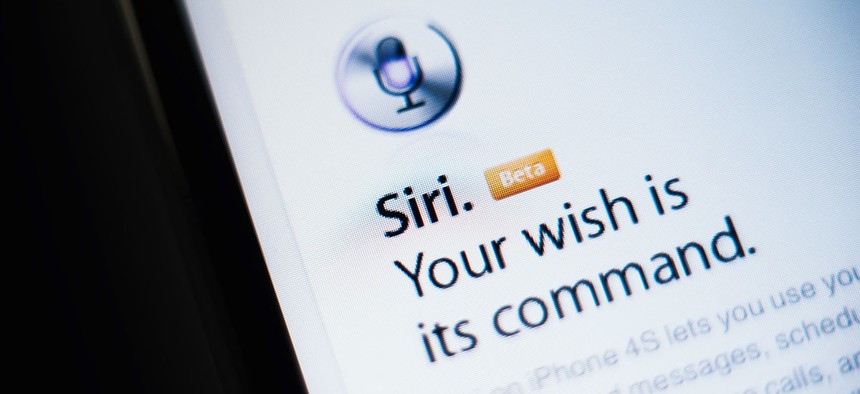Agencies Are a Step Closer to Creating Their Own Siri

Hadrian/Shutterstock.com
Siri, Alexa and Facebook chatbots might soon be handling common customer service roles in government.
Federal agencies are a step closer to automating some of their common customer service processes using artificial intelligence.
The General Services Administration recently wrapped a pilot that walked federal agencies through the process of building chatbots and other intelligent personal assistants similar to Apple’s Siri and Amazon’s Alexa.
Graduates of that pilot have developed some basic prototypes—a single chatbot that lets users access Small Business Administration licenses, Internal Revenue Service tax credits, Forest Service park permits, and Health and Human Services Department benefits, for one. But prototypes weren’t the point of the pilot, GSA's Emerging Citizen Technology Office lead Justin Herman told Nextgov—instead, it was to help agencies understand what they’d need before they can fully deploy intelligent personal assistants.
» Get the best federal technology news and ideas delivered right to your inbox. Sign up here.
One finding, Herman said, was that agencies need to assess their cloud services, as chatbots and voice-controlled virtual assistants would need to pull information from the internet. Agencies also need to think about the way they structure the data the assistants might pull from, especially if that includes personally identifiable information from citizens, he said.
It’s not yet clear where in each federal agency responsibility for creating intelligent personal assistants falls, Herman told Nextgov. Agencies such as National Oceanic and Atmospheric Administration and the Labor Department completed the workshop and brought varying personnel, including public affairs officers, Python developers and innovation teams.
“No agency came at this pilot the same way," Herman said.
Herman's team, which has worked to help agencies adopt social media to better connect with citizens, has noticed new technology is generally initially relegated to a technology shop.
“Eventually, access to these services spreads down to the just the program level,” Herman said, who explained he anticipates a similar pattern with intelligent personal assistants.
In the hackathon culminating the workshop, out of which agencies’ prototypes emerged, federal employees worked alongside representatives from Google, Amazon, Microsoft and Oracle. In the future, depending on the platform, agencies might be able to develop their own assistants in house with little coding knowledge. A Labor Department team put together three Amazon Alexa skills with no prior experience, for instance. Others might need to contract out to technology companies directly.
GSA is planning a showcase to demonstrate how intelligent personal assistants could be used in government. In the meantime, Herman’s team is collecting feedback from agencies about how the pilot helped them and what they need to be able to develop their own virtual assistants.
Though it’s summer and the White House has recently undergone a transition, Herman said he was surprised at how representatives from some agencies are already cooking up new project ideas. Some are thinking beyond “how can we apply this to [getting] open data into services,” he said, and instead considering combining chatbots with web forms and call centers using artificial intelligence.





